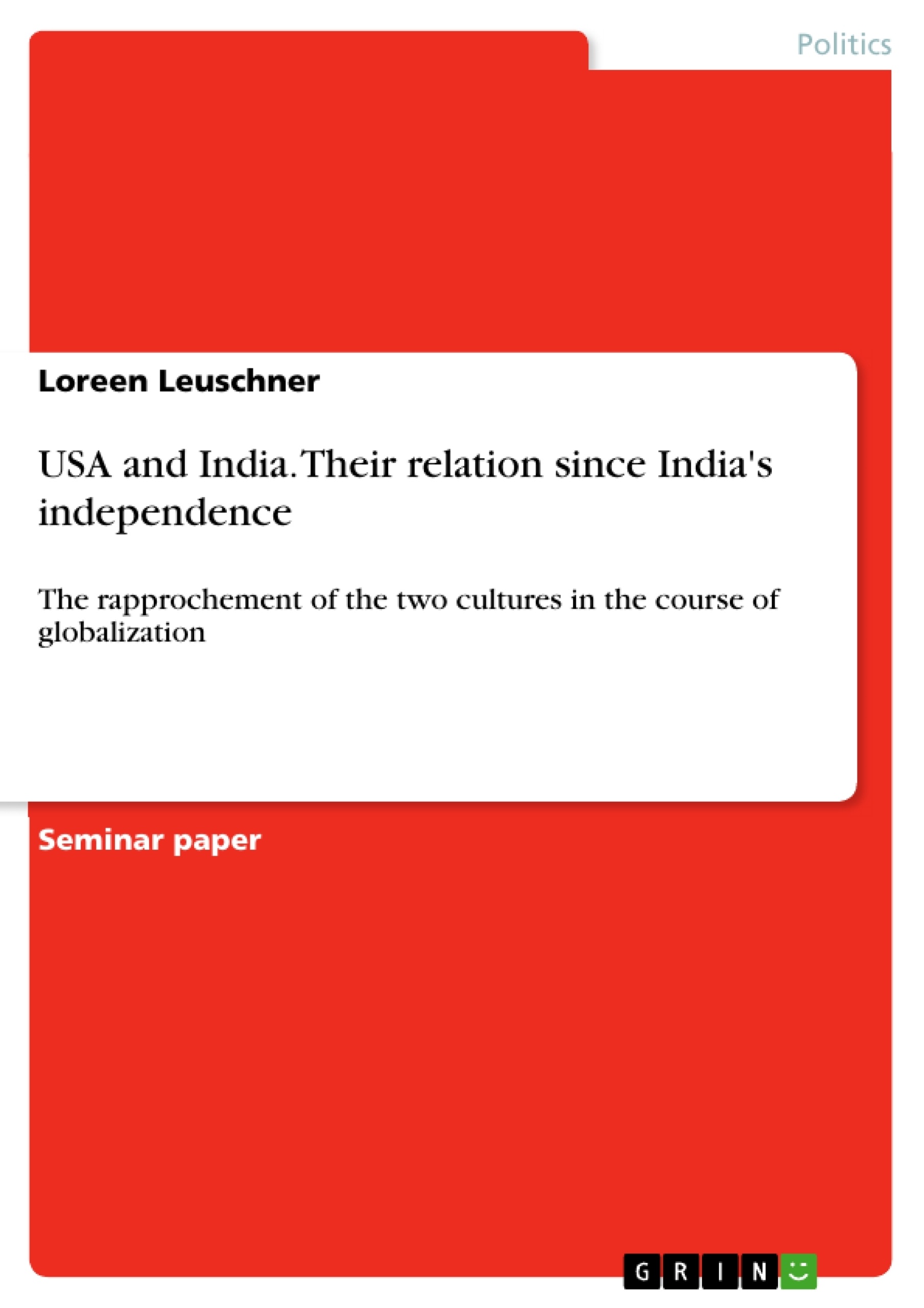This term paper, with the title "U.S. - India relations since India's independence and the rapprochement of the two cultures in the course of globalization", examines the importance of the politics of Jawaharlal Nehru and his successors for India's development into a leading power in South Asia, and the impact of these politics on the relations between the United States of America and India (1947 – 2009). Moreover, it deals with the question how globalization, since India's economic liberalization in 1991, affects the U.S. - India relations, and what changes it causes for the two countries and their citizens.
Inhaltsverzeichnis (Table of Contents)
- Introduction.
- Jawaharlal Nehru - a dominant colossus in India's politics: The beginnings
- Modernization or Westernization of India?
- Jawaharlal Nehru's domestic policy of India
- The rise and fall of the rightists in India.
- The US-American Anti-India Policy..
- Jawaharlal Nehru's foreign policy of India.
- Jawaharlal Nehru´s foreign policy: idealism and realism.
- Jawaharlal Nehru's legacy and its impact on India's foreign policy..
- Improvement in US-India relations after the end of the Cold War.
- Media: A cause for India's increasing consumerism.…………....
- The effect of India's global economic integration on the Indian and US -American workforce
- The consequences of globalization for India's farmers
- Walmart in India….……………….………..
- Intercultural rapprochement due to an increasing transnational expansion within the food and beverage sector.
- Hollywood and Bollywood............
Zielsetzung und Themenschwerpunkte (Objectives and Key Themes)
This term paper explores the significance of Jawaharlal Nehru's political approach and the impact of his successors on India's emergence as a prominent power in South Asia. It examines how these political developments influenced relations between the United States of America and India from 1947 to 2009. The paper also investigates the impact of globalization, particularly since India's economic liberalization in 1991, on U.S.-India relations and the changes it has brought about for both countries and their citizens.
- The role of Jawaharlal Nehru and his successors in shaping India's political trajectory.
- The evolution of U.S.-India relations in the context of India's independence and modernization.
- The influence of globalization on U.S.-India relations.
- The impact of globalization on India's economic landscape and its workforce.
- The emergence of intercultural rapprochement between the U.S. and India driven by globalized industries.
Zusammenfassung der Kapitel (Chapter Summaries)
The first chapter, “Introduction,” sets the context for the paper, highlighting the focus on U.S.-India relations since India's independence and the impact of globalization on these relations. The second chapter, “Jawaharlal Nehru - a dominant colossus in India's politics: The beginnings,” delves into the life and political legacy of India's first Prime Minister, examining his efforts to modernize India and navigate the complexities of international relations. This chapter also explores the challenges and opportunities arising from India's modernization and westernization processes. The third chapter, “Improvement in US-India relations after the end of the Cold War,” examines the shifts in U.S.-India relations following the end of the Cold War, highlighting the role of globalization and its implications for the respective countries and their populations. The chapter explores the effects of global economic integration on India and the U.S. workforce, including the consequences for Indian farmers and the impact of multinational corporations like Walmart. Furthermore, it explores intercultural rapprochement due to the expansion of transnational food and beverage companies, and the influence of Hollywood and Bollywood on cultural exchange.
Schlüsselwörter (Keywords)
The paper focuses on U.S.-India relations, Indian politics, Jawaharlal Nehru, modernization, westernization, globalization, economic liberalization, cultural rapprochement, intercultural exchange, global economic integration, and the impact of transnational corporations.
- Citar trabajo
- B.A. Loreen Leuschner (Autor), 2010, USA and India. Their relation since India's independence, Múnich, GRIN Verlag, https://www.grin.com/document/270729



